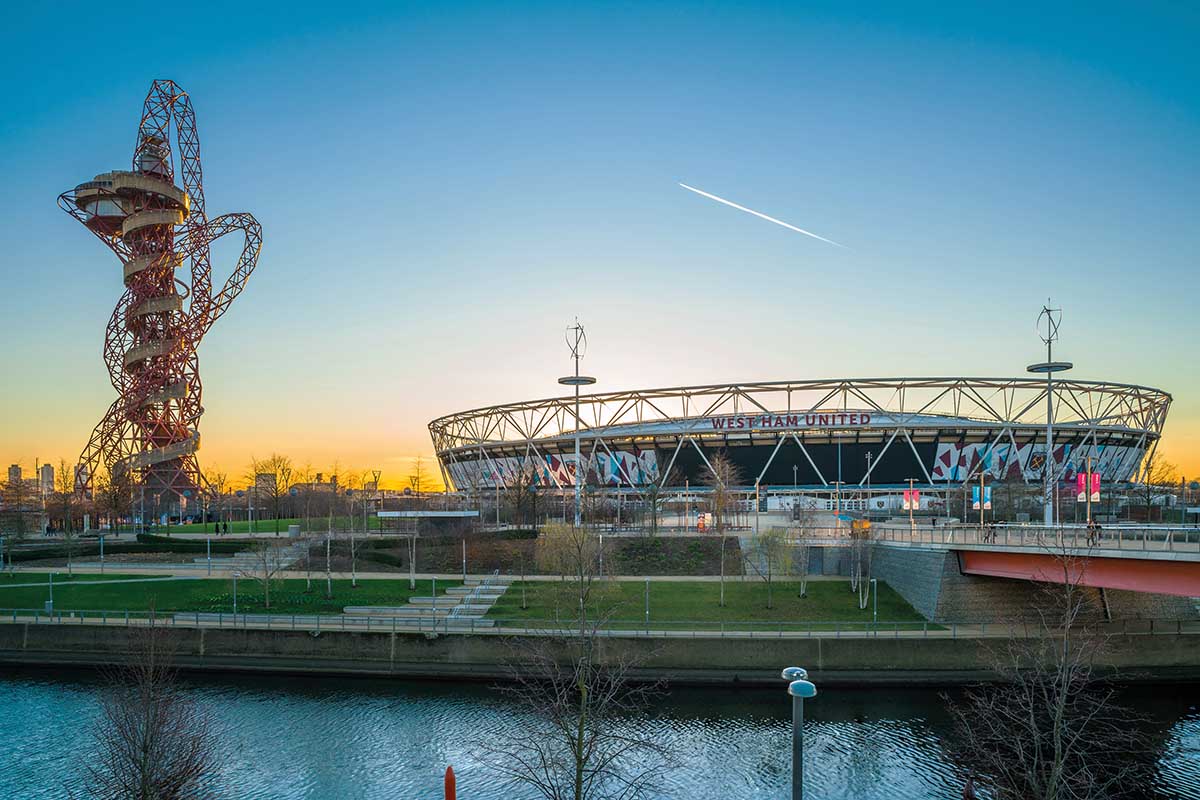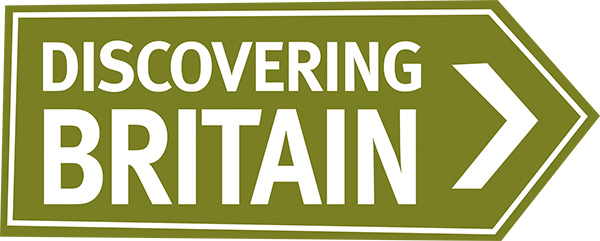
Rory Walsh explores London’s Queen Elizabeth Olympic Park and its impact on the surrounding area a decade after it hosted the games
Discovering Britain
Trail • Urban • London • 2.5 miles • Web guide
Compared with the era of the dinosaurs or the life span of a giant sequoia, a decade isn’t a long time. Yet ten years ago can feel like ancient history. July 2022 marks ten years since London hosted the Olympic and Paralympic Games. From the ‘Isles of Wonder’ opening ceremony to Team GB’s record medal haul by the end, London 2012 captured the public imagination. Perhaps it still haunts us. Post-Brexit, Covid, Black Lives Matter and #MeToo, that ‘golden summer’ almost shimmers like a mirage from another age.
‘The Games gave us a sense of pride and we’re not good at being proud of ourselves in Britain,’ says Dr Helen Rawling, this trail’s creator. Rawling’s trail loops around the southern end of what is now the Queen Elizabeth Olympic Park in Stratford. The route explores the park’s ongoing development and wider questions around regeneration. Rawling wrote it as a cultural geographer and a local resident. ‘I moved to this area in 2006 so I’ve seen how much the site has changed, before and after the Games.’
We are sitting on a bench in a plaza outside a department store. Westfield Stratford City is one of the largest shopping centres in the UK. Either side of us are rows of tall, glass-fronted shops. Footsteps echo on polished floors, muzak wafts through the air. It seems an incongruous place to start but Rawling explains: ‘During the Games around 180,000 people came to the Olympic Park every day. About 70 per cent of them were funnelled this way, through Westfield.’
Arching towards us is a huge footbridge. Tinted glass walls, at least 12 feet high, flank it like giant insect wings. ‘Signs at Stratford railway station lead people onto that bridge, away from the old Stratford Centre,’ says Rawling. When new visitors arrived for the Olympics, older areas were left behind. With Westfield on their doorstep, Rawling suspects many locals rarely visit the West End. Like Canary Wharf in preceding decades, the Olympics have shifted the capital further east.
After passing through Westfield, the trail enters the Olympic Park itself. The official website describes it as ‘a world-leading destination for sport, entertainment, culture, education and relaxation’. On this warm May morning, with an azure blue sky, landmark venues span the scene in a panoramic postcard. The former Olympic Stadium (now the London Stadium, home ground of West Ham United), is straight ahead along an axial view. To the left, the red scribble of the Orbit Tower overlooks the distinctive London Aquatics Centre. To the right is a surprise: a large building site. While a flock of construction cranes loom above, the air echoes with the clangs and wails of power tools. Regeneration is a long-term process.
Outside the London Stadium, a couple of pre-schoolers frolic in the fountains. ‘This place will be packed tomorrow,’ Rawling comments. It’s a Friday. Football? ‘No, just people bringing their kids for a day out.’ Rawling and her young family live in Bow, a 20-minute cycle ride away. ‘We visit regularly; it’s safe, clean, great for families. The park was a vital open space during lockdown.’

Humans aren’t the only beneficiaries. A zigzag path through young trees leads down to the City Mill River. Rawling often spots cormorants here, drying their wings in the sun. Pitting the concrete bank are a series of notches and holes. We glimpse sand martins popping in and out. The holes are industrial remnants. The City Mill River is one of various waterways that braid the Olympic Park. Many are tributaries and man-made diversions of the River Lea. By the 19th century, they were harnessed to make silk, dyes, porcelain, plastics, chemicals and matches. When these industries declined, the polluted waterways were abandoned. ‘One of the park’s big successes was restoring and opening them up,’ says Rawling. ‘They are also incorporated into the park really well, which helps increase biodiversity.’ The rejuvenated River Lea supports 300,000 wetland plants, which in turn encourages wildlife. The London Legacy Development Agency (LLDA) records that the park’s residents include 13,000 trees, 60 bird species and 250 types of insects.
Many of the plants and flowers are plotted in the outlines of former factories. This thoughtful touch in the landscaping reflects a lost landscape. ‘To create the Olympic Park, over 200 businesses were forced to move,’ Rawling explains. ‘Around 400 properties, including people’s houses, were demolished under compulsory purchase orders. Two Travellers’ sites and a historic community allotment were cleared. Not everyone wanted to leave. There was a lot of protest and resentment.’
Housing remains a contentious issue. The view from Loop Road takes in recent developments, including Icona Point and the Stratford Halo Tower. Rawling continues, ‘The Olympic Development Authority was required to provide 9,000 new homes on the site. A third had to be “affordable” social housing. This hasn’t really materialised yet. Only a fraction of the new homes has been completed. Plus, properties that developers class as affordable homes are often too expensive for many locals to buy.’
From the outskirts of the Olympic Park, the route climbs onto the Greenway. This arrow-straight grassy ridge is a curious edgeland, lined with wildflowers and drain covers. The latter produce wafts of an unmistakable smell. ‘We’re on top of a Victorian sewer, built in the 1860s,’ Rawling reveals. Despite its origins, the Greenway became a popular pedestrian route. Among its admirers was Mahatma Gandhi. In 1931 Gandhi lived in East London for three months to attend the Round Table Conference on the future of India. ‘He stayed with a family in Bromley-by-Bow and apparently enjoyed regular walks along the Greenway.’
Squeezing past Old Ford Lock, we follow the towpath of the Lee Navigation. New apartments jostle with converted warehouses. As we approach the Olympic Park again, Rawling recalls how it first impacted the area: ‘A massive blue hoarding suddenly appeared, blocking the towpath. It was very imposing and created lots of suspicion. The park is more integrated now.’ Rawling points ahead to a cluster of boats moored at Hackney Wick. ‘They’re floating bars and restaurants. A new riverside community has grown there from the footfall of the park.’
Turning away from the river, the trail concludes back in the park at Mandeville Place. This large open square, named after the 2012 Paralympic mascot, hosts many of the park’s public events. It’s now lunchtime. The square throngs with people enjoying the sun. A group of roller-skaters swoosh past long rows of banners. The banners are emblazoned with slogans celebrating the tenth anniversary of the Games: Records Were Broken, Memories Were Made, Legacy Is Delivered. The first two are beyond doubt. The third highlights ongoing change. Though the last Olympic medal has long since been awarded, there are still events to play out.

Go to the Discovering Britain website to find more hikes, short walks, or viewing points. Every landscape has a story to tell!




